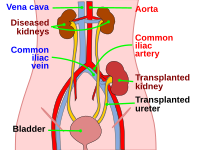
Clinical phenotype of severe and moderate haemophilia: Who should receive prophylaxis and what is the target trough level?
Sign Up to like & getrecommendations! Published in 2021 at "Haemophilia"
DOI: 10.1111/hae.14201
Abstract: One of the most often stated tenets of haemophilia care is that prophylaxis converts a person from a severe to a moderate phenotype. In this review, we argue that this is not an accurate assumption… read more here.
Keywords: moderate haemophilia; severe moderate; clinical phenotype; phenotype severe ... See more keywords

Trends in prevalence and determinants of severe and moderate anaemia among women of reproductive age during the last 15 years in India
Sign Up to like & getrecommendations! Published in 2023 at "PLOS ONE"
DOI: 10.1371/journal.pone.0286464
Abstract: Background Anaemia is a serious global public health problem that disproportionally affects children, adolescent girls, and women of reproductive age, especially pregnant women. Women of reproductive age are more vulnerable to anaemia, particularly severe and… read more here.
Keywords: reproductive age; moderate anaemia; women reproductive; pregnant women ... See more keywords

Severe and Moderate Primary Graft Dysfunction in Adult Heart Recipients
Sign Up to like & getrecommendations! Published in 2022 at "Brazilian Journal of Cardiovascular Surgery"
DOI: 10.21470/1678-9741-2022-0107
Abstract: Introduction The aims of this study were to determine the incidence of severe and moderate primary graft dysfunction (PGD) in our center, to identify, retrospectively, donors’ and recipients’ risk factors for PGD development, and to… read more here.
Keywords: primary graft; graft dysfunction; heart; pgd ... See more keywords

MCP extensors respond faster than flexors in individuals with severe-to-moderate stroke-caused impairment: Evidence of uncoupled neural pathways
Sign Up to like & getrecommendations! Published in 2023 at "Frontiers in Neurology"
DOI: 10.3389/fneur.2023.1119761
Abstract: Damage in the corticospinal system following stroke produces imbalance between flexors and extensors in the upper extremity, eventually leading to flexion-favored postures. The substitution of alternative tracts for the damaged corticospinal tract is known to… read more here.
Keywords: neural pathways; stroke; severe moderate; mcp joints ... See more keywords